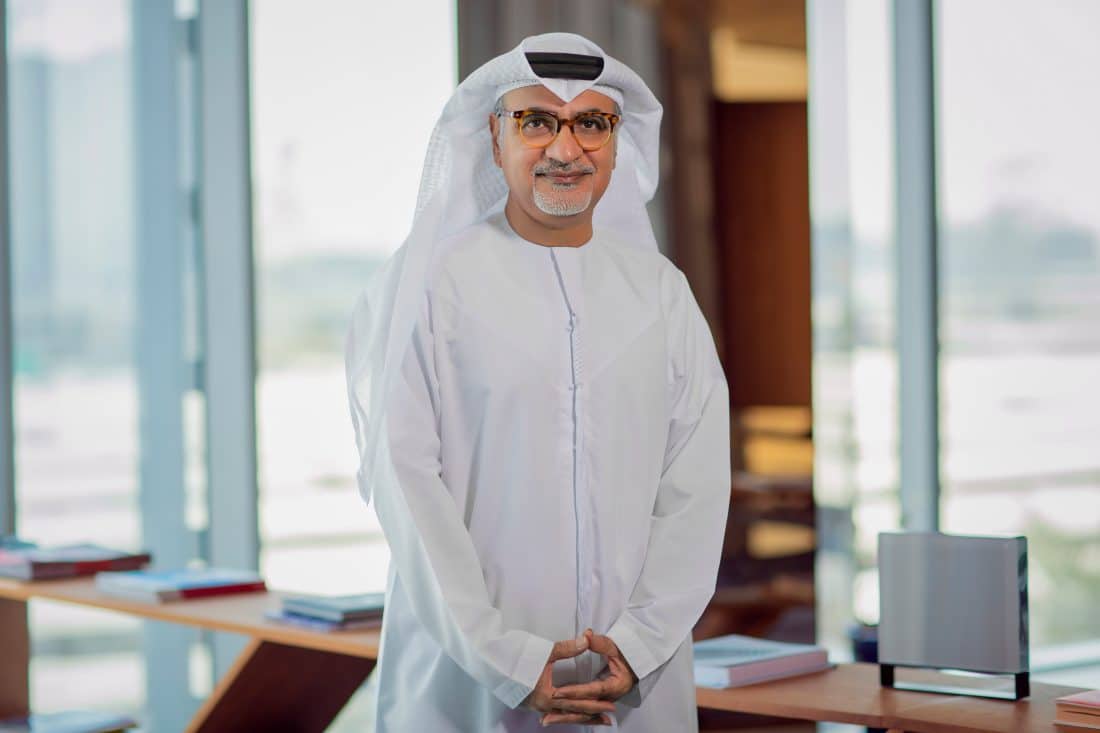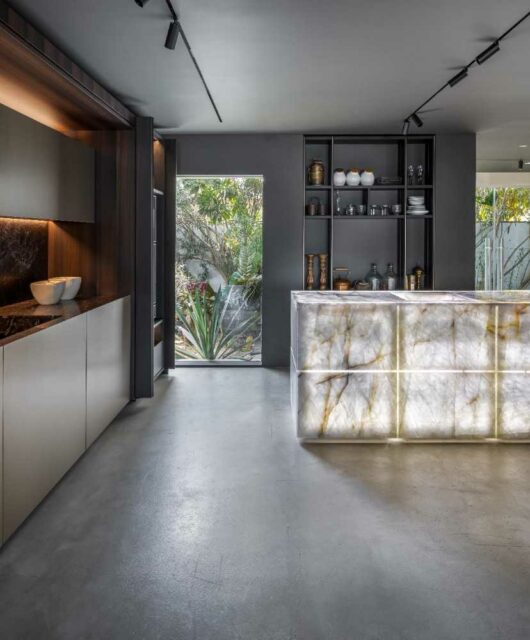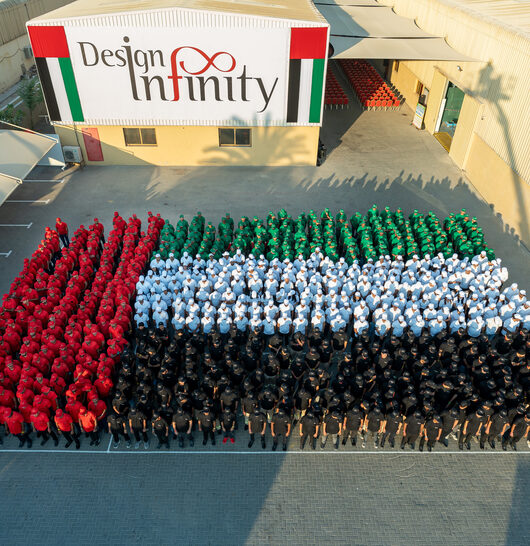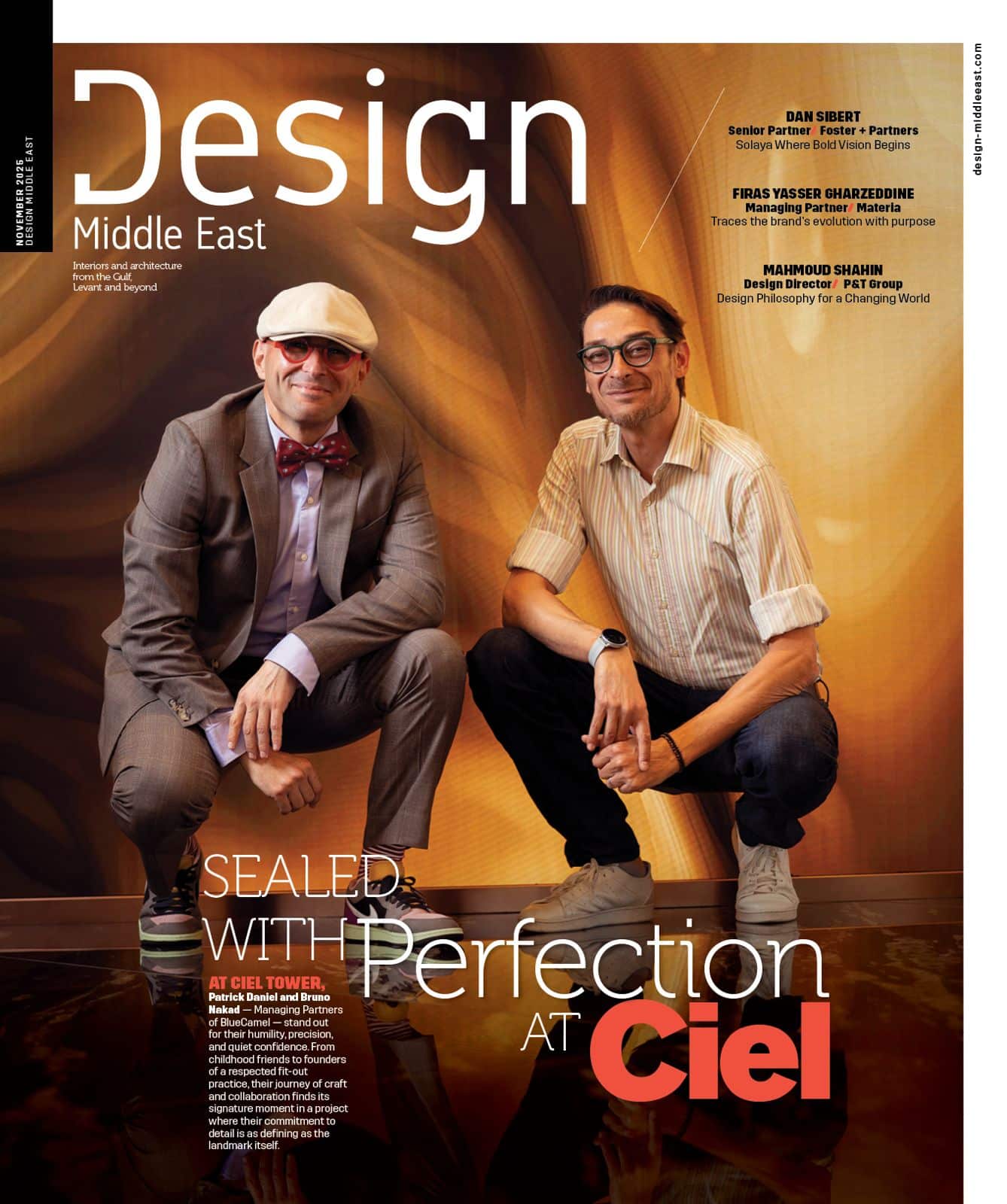 Mohammad Abdullah, president of Dubai Institute of Design and Innovation (DIDI), talks about the institute’s participation in Dubai Design Week, opportunities for students, and his vision for the future.
Mohammad Abdullah, president of Dubai Institute of Design and Innovation (DIDI), talks about the institute’s participation in Dubai Design Week, opportunities for students, and his vision for the future.
• DIDI hosted informative workshops and a series of discussions, and your students’ innovative works were displayed at Dubai Design Week. What was the common thread between these activities that you wanted to share with design enthusiasts/attendees?
The ultimate message DIDI wants to convey is that design is at the heart of the future world. Our panel discussions and workshops underscored how impact-driven and human-centric design is essential in an increasingly technology-dependent world. Whether we’re talking about living in space or under the sea or we’re talking about smart sustainable cities, we must make sure that all conversations consider the impact on people and the environment. Our faculty explores this subject with students at length, and it’s a message we aim to promote with governments and other academic and private organisations.
• What projects and initiatives make you the proudest at DIDI?
Faculty and students are involved in research, discussions and projects that are impressive and ground-breaking – so it’s nearly impossible for me to pick! Our Graduate Exhibition ranks high on the list. It’s the culmination of four years of hard work, learning and curiosity where students present final projects to the public. Last year, we hosted our first one at Dubai Design District. People got to see innovations and prototypes, such as gamified technology to track the development of children with ADHD, an AI and AR app for patients with Dementia and sustainable fashion concepts that show multidisciplinary thinking.
The other point of pride is Project Design Space. It has grown so much in such little time. We have partners like the Louvre Abu Dhabi, Mubadala Health, Expo 2020, Adidas and HP, who challenge students across the UAE and beyond to design solutions to relevant problems in their industries. It is a very fruitful and exciting way for students to learn and engage with experts.
• It must be incredibly satisfying to see the students learning and graduating in life. What are your expectations from them?
I hope that our students share forward what they have learned at DIDI. I want to see them imagine and realise a sustainable and inclusive world armed with human-centric and purpose-driven design thinking fundamentals. By introducing other people to this approach, we can start carving a future that leverages the best of technology for the betterment of humankind and the planet.
• What is your sense of the institute right now? How do you plan to sustain the momentum that has been built and ensure the institute continues to move forward on an upward trajectory?
Our secret to success has been our commitment to caring and curiosity. We’re in a great place as long as these two pillars remain valid for our faculty, staff, and students.
We also plan to grow with our student base to ensure that all students can continue learning in our intimate, interactive classroom environments. As such, we’re always looking for new professors, staff, and speakers who can bring unique perspectives that align with DIDI’s forward-looking approach. We also support our current professors in learning about and contributing to their fields and always be at the cutting edge. Exploring strategic partnerships and industry connections is part of an ongoing effort to keep enhancing the institute’s offerings with more hands-on experiences.
• What kinds of opportunities will your students have once your programme is completed?
Students go on to be employed by leading companies within their specialisations, while others go on to found businesses of their own. Some students have even continued developing their DIDI projects after graduating, turning them into complete business models and products. Students can tailor their career path since we teach them technical skills and transferrable skills like design thinking, problem-solving, creativity and empathy that can serve them in every aspect of life.
• What are some of the biggest challenges?
People are still becoming familiar with design as an academic or professional pursuit. Often, design is instantly associated with disciplines like fashion or graphic design. While that is part of our curriculum, it’s about much more than that – design is integral to the future world, especially as the digital and physical realms overlap. However, conversations around the future of work focus on the role design disciplines will play. Prospective students are more aware, and it is essential that parents and guardians also see the value of this field.
The other challenge is ensuring students can access internship programmes with relevant companies. A lack of structured internship programmes can impact a student’s ability to get real-world experience. It is why such programs and partnerships are built into DIDI’s curriculum but expanding that pool from the professional side is essential for student development.
• What is your vision for the institute moving forward?
The demand for courageous, innovative and empathetic minds has never been greater as we head to the fifth industrial revolution and the working relationship between smart technologies and humans evolves. Our students represent that future-focussed cadre of thinkers, innovators and disruptors who will define the world of tomorrow and make an impact.
• What are the strengths of DIDI’s courses?
First and foremost, the expertise of our faculty. Professors at DIDI are experts in their fields and contribute with research and insights. So, students learn from active industry professionals whose knowledge bank is continuously evolving and growing.
Our curriculum is another strength, crafted with the prestigious Massachusetts Institute of Technology (MIT) and The New School’s Parsons School of Design. It brings a new, cross-disciplinary approach to design thinking and teaching that instils flexible skills in students to take on a rapidly changing design and digital job landscape. Students must choose from at least two of four disciplines – Product Design, Multimedia Design, Fashion Design, and Strategic Design Management – which integrate design expertise, engineering know-how and business management skills into their educational journey.
• What priorities are you looking forward to taking on in the New Year?
Our priority moving forward is to continue spreading the knowledge of what we offer at DIDI to students and parents. Beyond prospective students, we want to make our academic principles available to professionals in the industry through more expert and faculty-led workshops and panels. Exploring new partnership opportunities and connecting with the industry remains a vital part of our plans. We want to ensure our students get a dynamic learning experience at DIDI, which requires us to innovate our offerings continuously.
• DIDI signed an MoU with Gulf Craft on the sidelines of Dubai Design Week. What does this partnership mean for DIDI?
Our goal to create multidisciplinary creative thinkers and designers requires students to transfer their innovative design thinking into real-world, actionable projects. Our partnership with a prestigious brand like Gulf Craft shows how we bridge learning from theoretical to practical at the Dubai Institute of Design and Innovation (DIDI). It awards students a one-of-a-kind opportunity to engage with industry experts and demonstrate how impact-driven design plays a vital part in business success.







